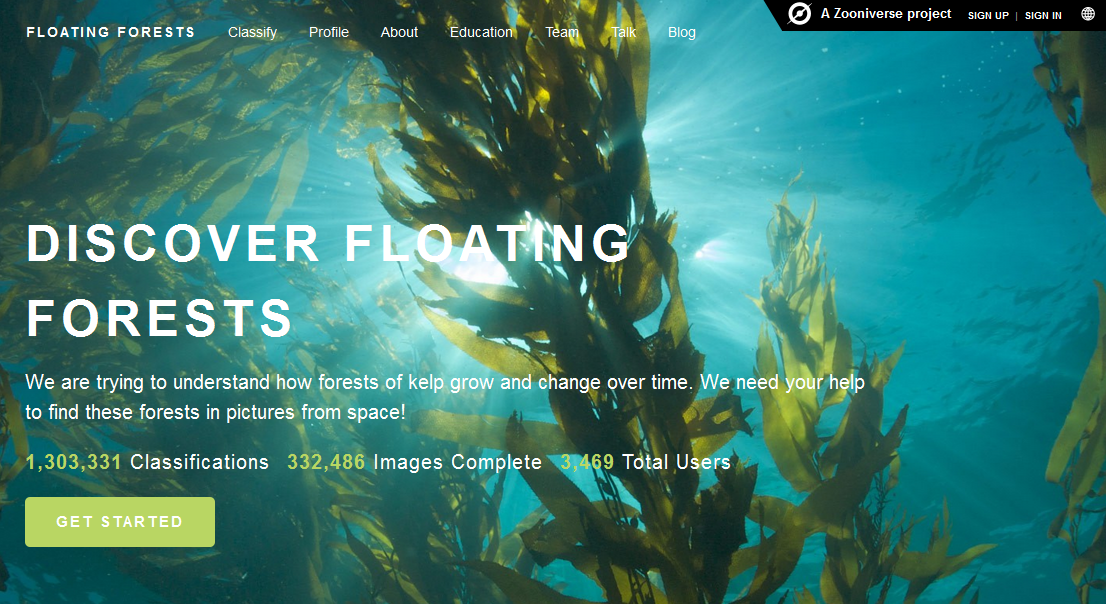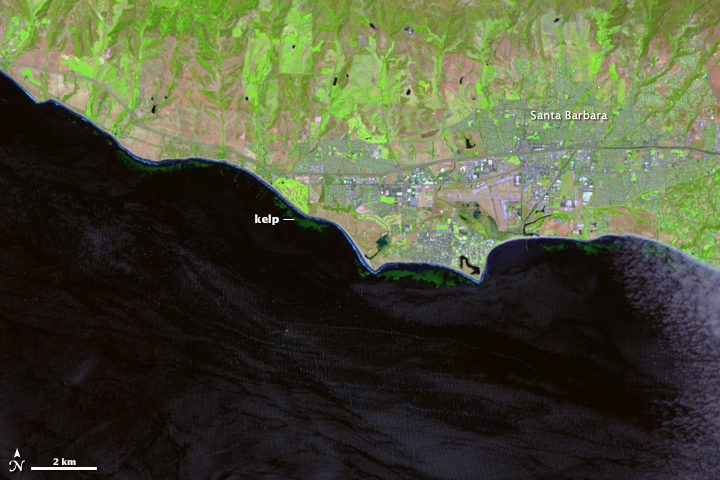Planet Citizens, Planet Scientists: Difference between revisions
Siterunner (talk | contribs) No edit summary |
Siterunner (talk | contribs) No edit summary |
||
| Line 19: | Line 19: | ||
[[File:Santabarbarakelp oli 2013140.jpg | link=http://www.floatingforests.org/]] | [[File:Santabarbarakelp oli 2013140.jpg | link=http://www.floatingforests.org/]] | ||
Landsat 8 can detect near-infrared wavelengths of light | Landsat 8 can detect near-infrared wavelengths of light to spot and monitor offshore kelp forests. (NASA Earth Observatory image) | ||
○ ○ ○ ○ | ○ ○ ○ ○ | ||
Revision as of 15:50, 14 January 2015
Help with the Kelp
Join in -- become a Planet Citizen, Planet Scientist -- http://www.floatingforests.org/
"Automated classification methods just don’t produce acceptable levels of accuracy yet.” Kyle Cavanaugh, UCLA
Citizen scientists—recruited via the Internet—are given instruction in how to hunt for giant kelp in satellite imagery. They are then given Landsat images and asked to outline any giant kelp patches that they find. Their findings are crosschecked with those from other citizen scientists and then passed to the science team for verification. The size and location of these forests are catalogued and used to study global kelp trends.
As of January 11, 2015, more than 3,400 citizen scientists had joined Byrnes and Cavanaugh to look for kelp in 328,000 Landsat images ...
http://earthobservatory.nasa.gov/Features/FloatingForests/page1.php
http://earthobservatory.nasa.gov/IOTD/view.php
○ ○ ○ ○
Landsat 8 can detect near-infrared wavelengths of light to spot and monitor offshore kelp forests. (NASA Earth Observatory image)
○ ○ ○ ○
Planet API | #PlanetAPI | Planet Citizen | #PlanetCitizen
GreenPolicy360 | #Earth360 | #EarthImaging | #EarthMonitoring
GP360 | #EarthObservations | #EarthScience | #NewSpace
#EarthPOV | Earth Point of View
○ ○ ○ ○

